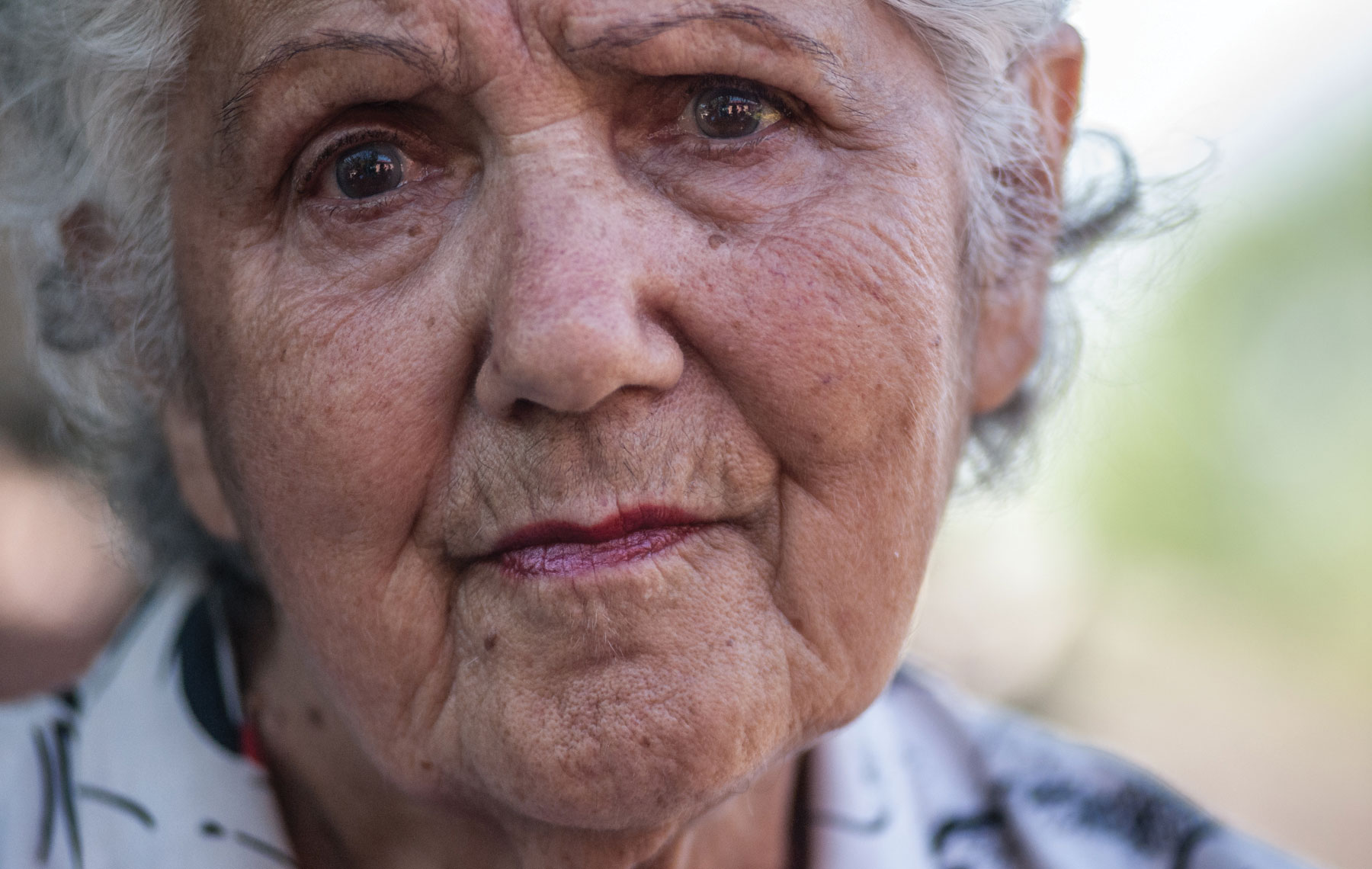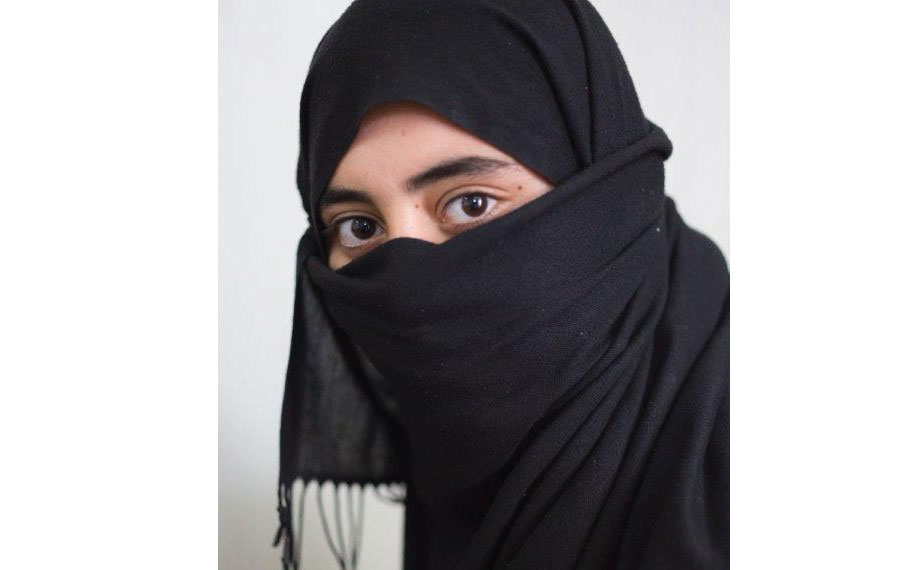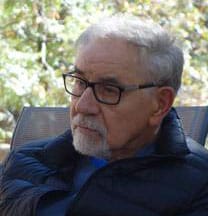 Leana, Roma survivor, Dragasani, Romania
Photo by Markel Redondo/Yahad-In Unum
Leana, Roma survivor, Dragasani, Romania
Photo by Markel Redondo/Yahad-In Unum A new exhibit at the Los Angeles Museum of the Holocaust (LAMOTH) urges the visitor to think of war, genocide and mass atrocities in a different way. In “Women at the Frontline of Mass Violence Worldwide,” the faces of the women, especially their eyes, are haunting. And so are their stories.
The exhibit focuses on different eras and locations, but as the introductory text points out, “the brutality inflicted upon women during genocide and mass violence … shares similarities from one conflict to another. … [W]omen are systematically targeted by perpetrators of mass violence, humiliated … raped, deprived of their motherhood, sterilized, and used as slaves.”
The exhibit was curated by Marco Gonzalez, executive director of Yahad-In Unum, a Paris-based organization founded in 2004 by leaders of the French Roman Catholic and Jewish communities to locate mass graves of Jewish victims of the Nazis’ mobile killing units — the infamous Einsatzgruppen, which killed approximately 1.5 million Jews but are not as well documented as the killings in the concentration camps.
Some Jewish women who survived the “Holocaust by Bullets” by the mobile units in Eastern Europe are part of the LAMOTH exhibit. However, the exhibit also gives voice to 20 women from four conflict zones: Holocaust survivors; survivors of the genocide against the Romani (Gypsy) people during World War II, mostly in Romania; survivors of the Mayan genocide in Guatemala in the 1980s; and Yazidi survivors who were tortured by ISIS in Iraq beginning in 2014.
Among the stories is that of Alexandrina, a survivor of the Romani genocide by the Nazis. Alexandrina recalls how mothers carrying babies in their arms had no choice but to leave their infants on a road so they could escape approaching soldiers. “These children,” she said, “were run over by horses that were chasing us.”
“Things like sexual violence, rape and forced prostitution are not well documented. … We believe these stories need to be added to the history.” — Beth Kean
A woman who survived Guatemala’s genocide against the Mayan people in the 1980s said she was pregnant when soldiers barged into her house. “[The soldier] abused me,” she said. “As a result of the rape, my child was born handicapped.”

Photo by Aleksey Kasyanov/Yahad-In Unum
The stories of atrocities committed against the Yazidi women are particularly horrifying. Yazidis are followers of a monotheistic faith that has Abrahamic elements but is not Islam, which has made them targets of ISIS, whose adherents consider Yazidis “impure.” Until a few years ago, Yazidis were protected by living in areas of Iraq and Syria controlled by Kurds, but in recent years, with ISIS’ gains, the Kurds have not been able to protect the Yazidis.
“An ISIS chief came and chose 35 girls. I was among them,” Nasrin, a Yazidi survivor, says in her story. “We were taken to a two-story building and locked in a room. The first night that he brought me [there], he undressed me and raped me. Then he made four of his guards come back to the room and they raped me, one after the other.”
Other Yazidis tell similar stories. One was 14 when she was interviewed. “I was given to an ISIS guardian as a gift,” she said. “For months I was handcuffed to a bed.”
Jill Brown, LAMOTH’s director of communications and outreach, said the exhibit breaks new ground for the museum.
“In my recollection, we’ve never done a temporary exhibit on this scale, that focuses so much on historical events beyond the Holocaust,” Brown said. “I think people will see the similarities among these experiences and, also, the differences. We talk about the six million Jews who were murdered, but that’s an overwhelming number. It’s easier for people to relate to one person or one family at a time, so this exhibit follows a similar path: focusing on individual survivors whose suffering is emblematic of a whole group of people whose experiences were similar.”

Photo by Victoria Bahr/ Yahad-In Unum
Beth Kean, LAMOTH’s executive director, said historians often overlook women’s experiences in conflicts. She hoped that by sharing these stories of female victimization, “it will make us understand that we need to work harder to prevent this from happening in the future.
“Things like sexual violence, rape and forced prostitution are not well documented,” Kean said. “And even other experiences, like women having their heads shaved, not having underwear, things like how they stopped having their periods; and for many of the young teenagers, wondering if they will be able to have kids if they survive.
“Women are the ones doing a lot of the work, taking care of their siblings, or farming, or doing the heavy lifting … so this is a chance to give them a voice. We believe these stories need to be added to the history.”





















 More news and opinions than at a Shabbat dinner, right in your inbox.
More news and opinions than at a Shabbat dinner, right in your inbox.